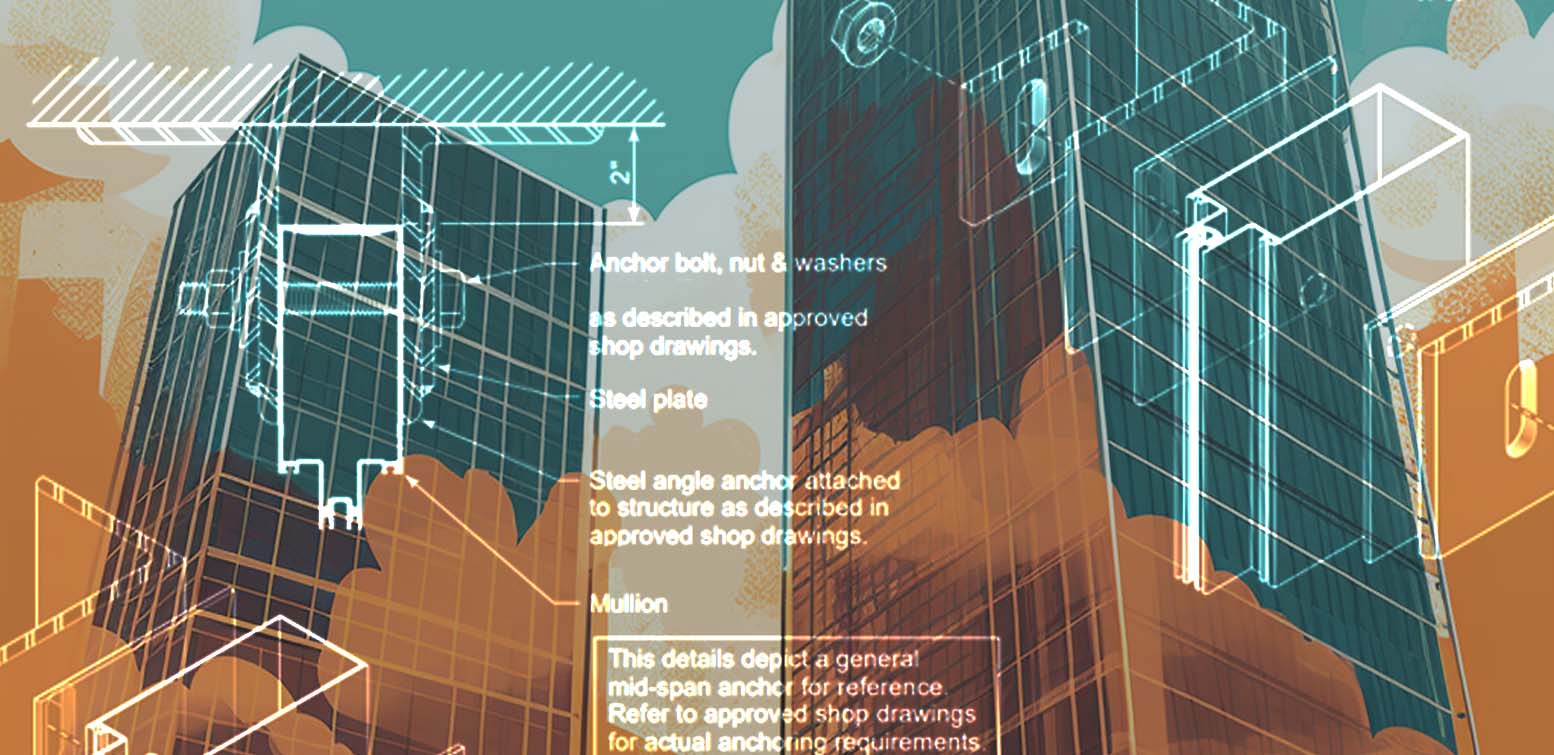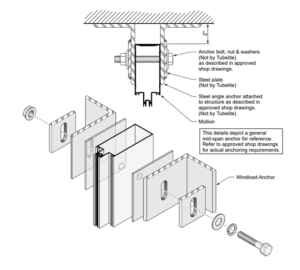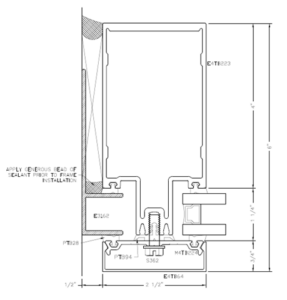The Basics: Introduction to Curtain Wall Anchorage
Both glass curtain walls and storefront facades can be used to introduce more natural light to the interior of a building. While curtain walls are definitely more complicated to fabricate and install, they offer several design and structural advantages over storefront facades. As a result of this added complexity, curtain walls need to be attached to the structure of the building using specially designed anchors.
A very brief history of curtain walls
The use of large glass display windows dates back to the mid-19th century, when manufacturers started to produce large glass panes at relatively low cost. At the time, most buildings were designed with the exterior walls supporting the majority (or all) of the weight of the structure. The first storefront-style display windows therefore had to be embedded in cast iron structures that were able to support the building load. But the development of structural steel and reinforced concrete made it possible to support building loads with columns (rather than exterior walls), and therefore architects became free to design exterior walls that aren’t load-bearing, using light materials like glass for exterior facades (in other words, curtain walls).
Curtain walls can be used in ways that glass storefront facades never could. For example, they can span multiple floors, handle larger wind loads, permit more natural light into the building, and they can be designed in complex shapes. But even though curtain walls don’t bear any load from the building, they still need to be anchored to the structure to support their own dead load and account for factors like thermal expansion and contraction, water diversion, wind load, and seismic forces. The rest of this article will explain how various curtain wall anchors work.
Anchor type #1: F&T Clips
F&T clips are used to anchor the head and sill of a typical curtain wall system. The legs of the clips slide into the open ends of the vertical mullions. The F clips which only have 1 anchoring leg and are used at the jambs, while the T clips have both anchoring legs and are used at intermediate verticals.
Anchor type #2: Windload Clips and Deadload Clips
When curtain walls span multiple floors they need to be anchored at the floor lines. This can happen at the slab edge, or a structural member such as an I-beam. Depending on the direction of the design team, and engineers the clips will either need to be slotted (windload) or through bolted (deadload). If the clips are slotted they allow movement while still resisting wind loading. This also allows the floors to move independently of the glazing system. For deadload or through bolted clips the movement must be allowed in the system through working splices.
Anchor type #3: F Perimeter
F perimeter is an aluminum extrusion that can be used at curtain wall jambs. These perimeter anchors help limit deflection of the jamb and keep the joint sizes minimal.
Anchor type #4: Embed Anchors
Embed anchors are worth mentioning, even though the embeds do not actually attach to the glazing system members. Embeds are cast in place anchors that are set into the concrete while it is being poured. All types of system clips can be attached to them by mechanical and welding means.
Need help with your curtain wall design?
No single anchoring product is ideal for all applications. Variables like dead load, wind load, seismic forces, the size/shape of curtain walls, budget, lead time requirements, building codes, and more, all have an impact on what is the best anchoring solution. When in doubt, it’s a good idea to consult glass and glazing experts.
MP Drafting specializes in producing complex drawings for glass and glazing systems with curtain walls of any shape, size, and connection type. Contact us today to talk about how we could help you select the right anchoring solutions and produce accurate shop drawings to streamline the fabrication and construction of your project.





